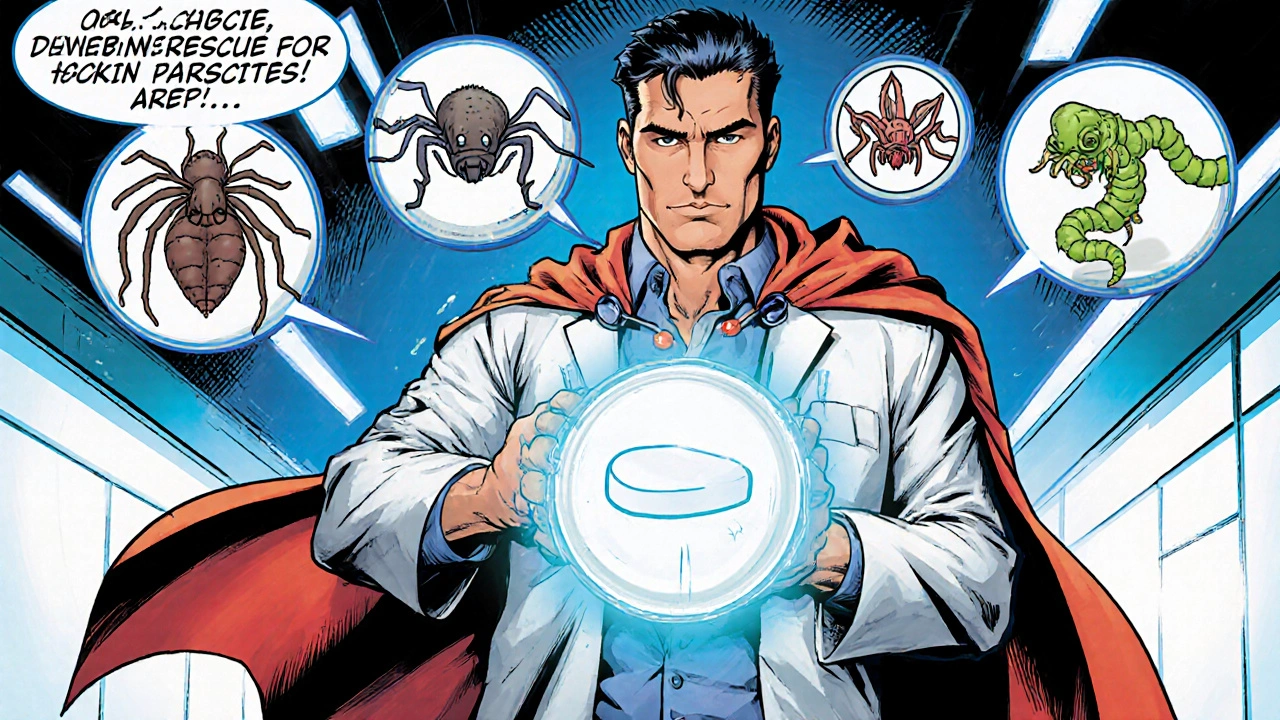Parasitic Skin Conditions
When dealing with parasitic skin conditions, infections caused by organisms that live on or under the skin and trigger itching, rash, or lesions. Also known as skin parasites, they range from tiny mites to single‑cell protozoa. Understanding them starts with recognizing the most common culprits. One major example is Scabies, a mite infestation that burrows into the upper skin layer, causing intense night‑time itching and a rash of tiny bumps. It’s often called the “itch that won’t quit.” Another frequent problem is Pediculosis, head lice infection that lives on the scalp and feeds on blood, leading to visible nits and a persistent tickle sensation. A less common but serious form is Cutaneous leishmaniasis, a protozoan disease transmitted by sand‑fly bites, producing ulcerated sores that can scar if untreated. These three entities illustrate a core semantic triple: parasitic skin conditions encompass scabies, pediculosis, and cutaneous leishmaniasis. A second triple shows the relationship: effective treatment requires accurate diagnosis and targeted medication. A third connection: prevention relies on hygiene, environmental control, and awareness of exposure risks. With that framework, you can see how each condition fits into the broader picture of skin‑based parasitic disease.
Key Considerations for Diagnosis and Management
Most parasitic skin conditions start with a simple visual check, but a confident diagnosis often needs a skin scraping, adhesive tape test, or dermatoscopy. For scabies, a dermatologist looks for the classic “burrow” line—fine, serpentine tracks between fingers or on the waist. Pediculosis shows up as live lice or opaque nits attached to hair shafts within a half‑centimeter of the scalp. Cutaneous leishmaniasis lesions begin as papules and progress to painless ulcers with raised edges; a lab biopsy confirms the parasite. Treatment hinges on the parasite’s biology. Scabies responds well to topical 5% permethrin cream applied overnight, while oral ivermectin offers a convenient alternative for severe or crusted cases. Pediculosis is usually cleared with a single application of 1% permethrin lotion or a dimethicone‑based silicone oil that smothers the insects; repeat treatment eliminates any newly hatched nits. Cutaneous leishmaniasis often requires systemic agents such as miltefosine or liposomal amphotericin B, selected based on the species and lesion location. Because many of these drugs interact with other medications, it’s critical to review a patient’s full medication list—something highlighted in articles about antiviral and antibiotic interactions on our site. For example, using ivermectin alongside certain anticonvulsants can alter drug levels, just as cefuroxime dosing varies between oral and IV routes. Awareness of possible skin‑related side effects—like irritation from topical steroids or secondary bacterial infection from scratching—helps clinicians choose the safest regimen. Prevention ties back to the earlier semantic triple. For scabies, wash all clothing and bedding at 50 °C, vacuum carpets, and treat close contacts simultaneously. Pediculosis spreads in schools and daycare centers; regular head checks, avoiding sharing combs, and treating all family members cut transmission cycles. In endemic regions, using insect repellent, wearing long sleeves, and sleeping under bed nets reduce sand‑fly bites that cause leishmaniasis. While each parasite has its own quirks, they share common threads: itching that drives patients to scratch, risk of secondary infection, and the need for both pharmacologic and environmental strategies. Our collection below covers a range of related topics—from drug interaction safety to skin inflammation therapies such as cryotherapy—that can complement the management of these conditions. Dive in to see practical tips, dosage guidance, and the latest evidence that helps you turn a tricky skin problem into a manageable one.
